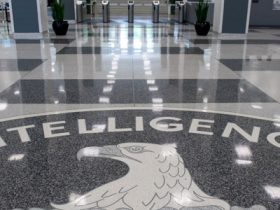The Defense Department in recent years has taken a more targeted approach to connecting forces across operational domains — and, according to military leaders and outside experts, it’s starting to yield results.
In the early days of the Defense Department’s pursuit of Combined Joint All-Domain Command and Control, or CJADC2, the focus was on full interoperability among and within all of the military services. Bryan Clark, director of the Hudson Institute’s Center for Defense Concepts and Technology, said the vision, while well-intentioned, was too broad in its scope.
“That was a little bit too ambitious for what the technology and our requirements and acquisition process can achieve,” he said June 5 at a virtual C4ISRNET Conference. “I think by building it from the bottom up to a larger aggregation, we’re going to see more success with JADC2 going forward.”
That bottom-up approach, Clark said, has meant that rather than try to connect everything, the department is addressing the most urgent operational problems through joint and service-level experimentation campaigns.
The military services each have their own versions of this. The Army calls its approach Project Convergence, the Navy Project Overmatch and the Air Force has the Advanced Battle Management System. The Chief Digital and AI Office also holds regular technology sprints through an event known as the Global Information Dominance Experiment, which bring together the services, combatant commands, Joint Staff and international partners to test out CJADC2 capabilities.
In February, Deputy Secretary of Defense Kathleen Hicks announced the Defense Department had delivered a baseline CJADC2 capability that was validated through a GIDE event held late last year. The department hasn’t revealed specifics on what was fielded but Hicks said it was improving information-sharing in the field.
Mark Kitz, the Army’s program executive officer for command, control, communications-tactical, said during the conference that experiments like GIDE and Project Convergence have helped highlight the sensor-to-shooter connections that are highest priority for the services.
They’ve also led to a heightened focus on interoperability, which has yielded some tangible results, he said.
For example, during the most recent Project Convergence event that wrapped up in March, known as Capstone 4, the Army and the Navy directly integrated their kit and were able to bring together their data environments.
“And so, Project Convergence offered sort of this real opportunity for us to bring these capabilities together in a real operational way and . . . get through sort of the challenges of data interoperability,” Kitz said.
During the same exercise, the Air Force’s Advanced Battle Management team, led by Brig. Gen. Luke Cropsey, brought a tool that allows the service to see how its air picture integrates with its sensing environment — a capability that could directly benefit the Army.
“The investments that Gen. Cropsey and his team were making were directly related to a gap in the Army’s architecture,” Kitz said.
Courtney Albon is C4ISRNET’s space and emerging technology reporter. She has covered the U.S. military since 2012, with a focus on the Air Force and Space Force. She has reported on some of the Defense Department’s most significant acquisition, budget and policy challenges.
Read the full article here

:quality(70)/cloudfront-us-east-1.images.arcpublishing.com/archetype/XAJJP7C4F5B3RPNQYYALNSAF54.jpg)
:quality(70)/cloudfront-us-east-1.images.arcpublishing.com/archetype/HTW3ADFHT5FZDCVZPBZ6OOVLZE.png)

:quality(70)/cloudfront-us-east-1.images.arcpublishing.com/archetype/OBBWXKC2HVH35HRVXGI6OTEN24.jpg)


Leave a Reply